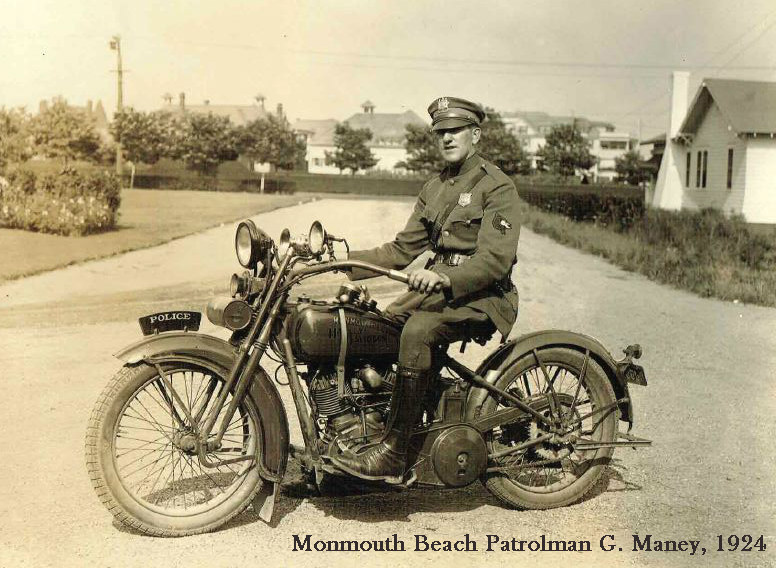A History of the MBPD
Written by Greg Kelly

One of the many reasons Monmouth Beach is such an outstanding community is that residents believe we live in a condition of safety and security. That comfort standard goes back for a century and into today.
The origins of the Monmouth Beach Police Department date to April 1906 when the month-old borough council appointed a police committee. Members of that first committee were Borden West, John A. Maney, and Abram O. Johnson. The first borough law enforcement budget was $1,200. For more than 40 years, the chairman of the police committee was considered the police chief.
Thus, for most of the first half of 20th century, the borough wasn’t really protected by official police officers, but rather by police marshals. Indeed, the town didn’t have an chief of police until 1945 when Edward Sweeny was appointed to the post.
The first marshals, appointed in June 1906, were John Burns and Charles Archer. They were paid $60 per month and worked 12-hours shifts from June 1 to October 31. The committee appropriated a sum of $10 to pay for their revolvers and cartridges.
 In April 1909, call boxes were installed in town and the council determined that one of the duties of the marshals would be to raise the American flag at the firehouse each day. The first discussion of town road speed limits came up in 1912; they were finally posted in 1927.
In April 1909, call boxes were installed in town and the council determined that one of the duties of the marshals would be to raise the American flag at the firehouse each day. The first discussion of town road speed limits came up in 1912; they were finally posted in 1927.The first time the borough paid for uniforms was in May 1914. An amount of $21.30 was paid to W.H. Woolley & Son in Long Branch for the police clothes. The first police vehicle was purchased in March 1921; $87.50 for a Harley Davidson motorcycle.
A small kiosk at the intersection of Beach River and Ocean Avenue built in the summer of 1922 was the first police building. It remained there until 1926 when it was moved to the Galilee section of town. In the 1930s, it was the office for Sheridan’s Garage and then the outhouse for Pete’s Inn (now Boyle’s Tavern). Today, it stands in refurbished condition on Beach Road on the Wells Fargo Bank property.
A police department was formally created in February 1927. In April of that year, the police force purchased its first auto, a Ford Coupe, for $575. The borough’s first municipal court was established in April 1929. In the summer of 1931, the board of commissioners passed an ordinance outlawing all hunting within the confines of the borough.
In May 1945, George V. Maney, Nicholas F. Woolley, and Edward Sweeny were appointed “police officers.” The first time they were referred to as police officers. All three men would go on to serve as chief. In October 1949, the borough commissioners requested that a traffic light be installed at the intersection of Beach River and Ocean Avenue—27 years later one arrived. Another light at Ocean Avenue and Valentine Street was added in the summer of 1995. In June 1955, the MB School PTA asked for the first crossing guards.
Richard L. Keller, the longest serving chief of police, was the first officer to receive professional police training (today it’s mandatory). Prior to that, new officers were given a badge and gun, rode a couple of shifts with experienced officers, and then set off on their own. Up until 1964, the department only had four officers, with only one patrolling at any given time. Plectrons units were added to police cars in 1971. These signaling devices allowed the patrolman to set off the town-wide alarm with out going directly to the firehouse.
In 1973, the department finally added another patrol car. Prior to that, a loaner car had to be used when the police vehicle was in for repairs. Sometimes officers had to answer calls in their private autos. Also that year, the MBPD installed its first telephone switch board allowing residents to contact the police directly.
For many decades the police department was housed in the borough hall; where they quickly outgrew a large renovation in 1977. Today, a professionally trained police force operates in a modern facility on Willow Avenue. Opened in October 1990, the construction was paid for by Jay. W. Ross.
The agency presently consists of ten full-time sworn officers, eight seasonal police officers, a civilian staff, and oversees the school crossing guard staff.

